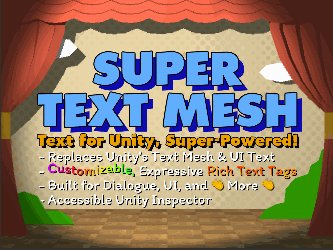Hi,
On Unity 2022.3.60f1 here and trying to set the outline color in code using the Ultra shader.
What is the best way to do this? I created different materials and assign them and see them updated in the inspector, but not on screen.
Last resort will be to have multiple instances of SuperTextMesh and toggle their visibility but that is less than ideal.


